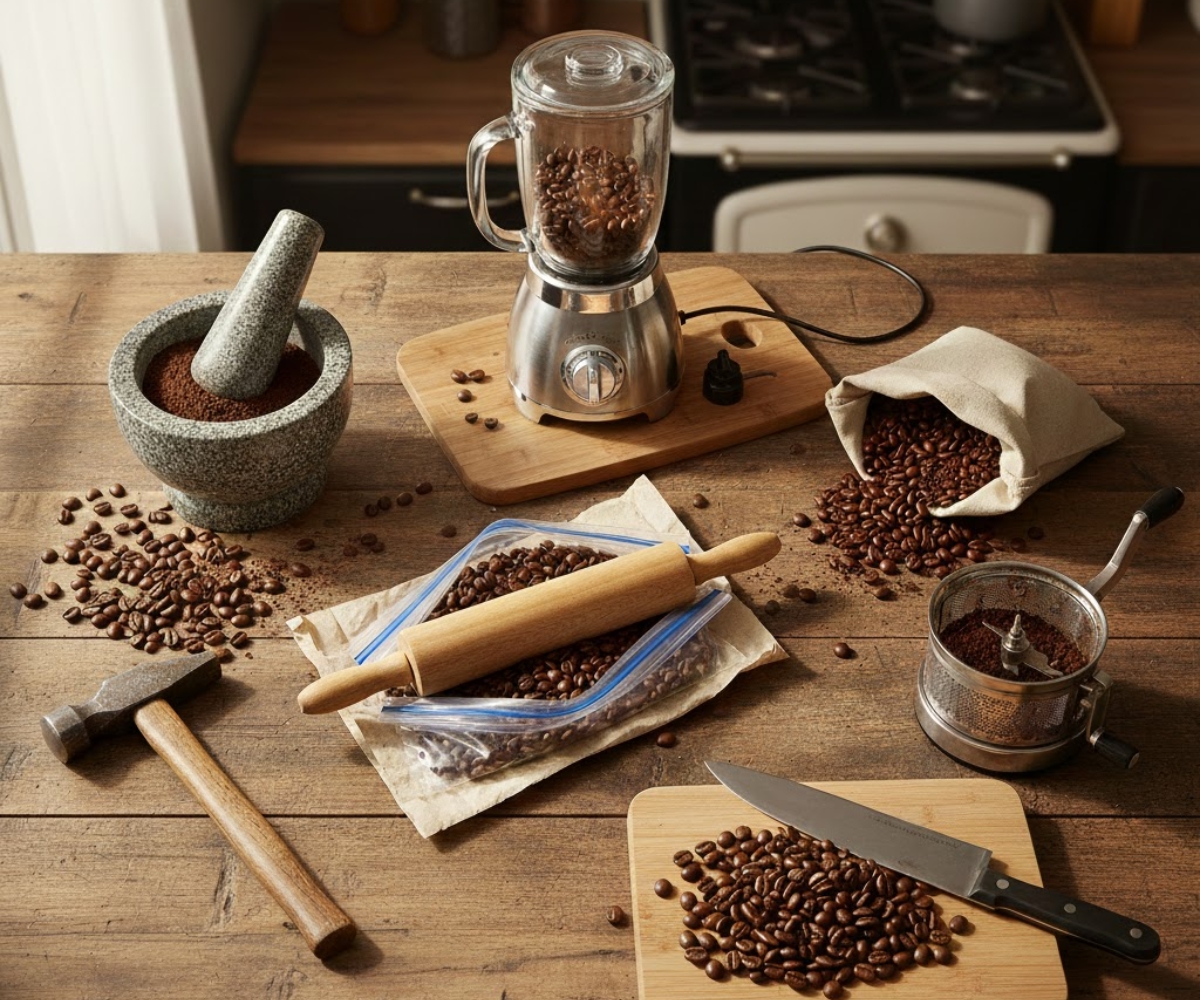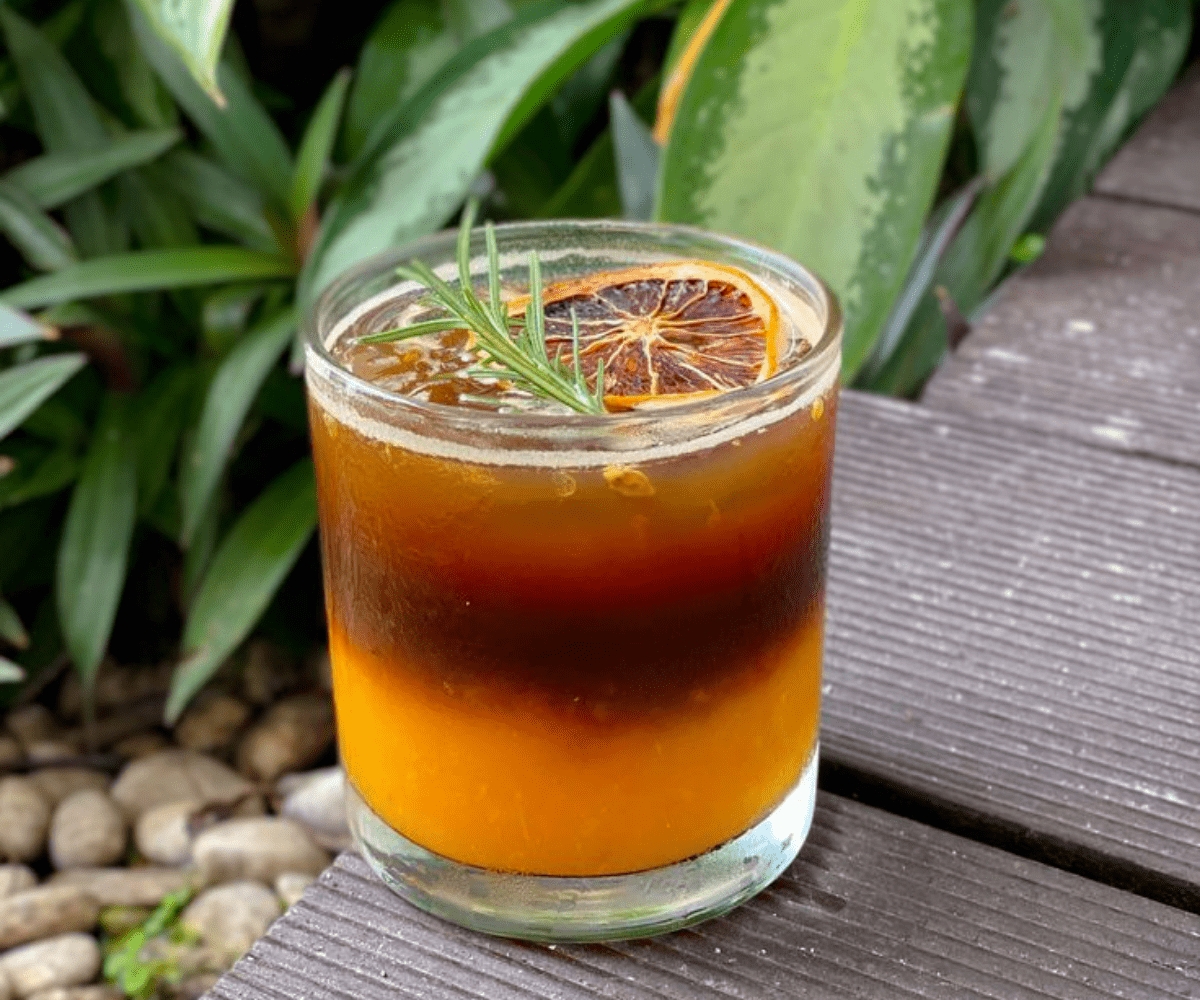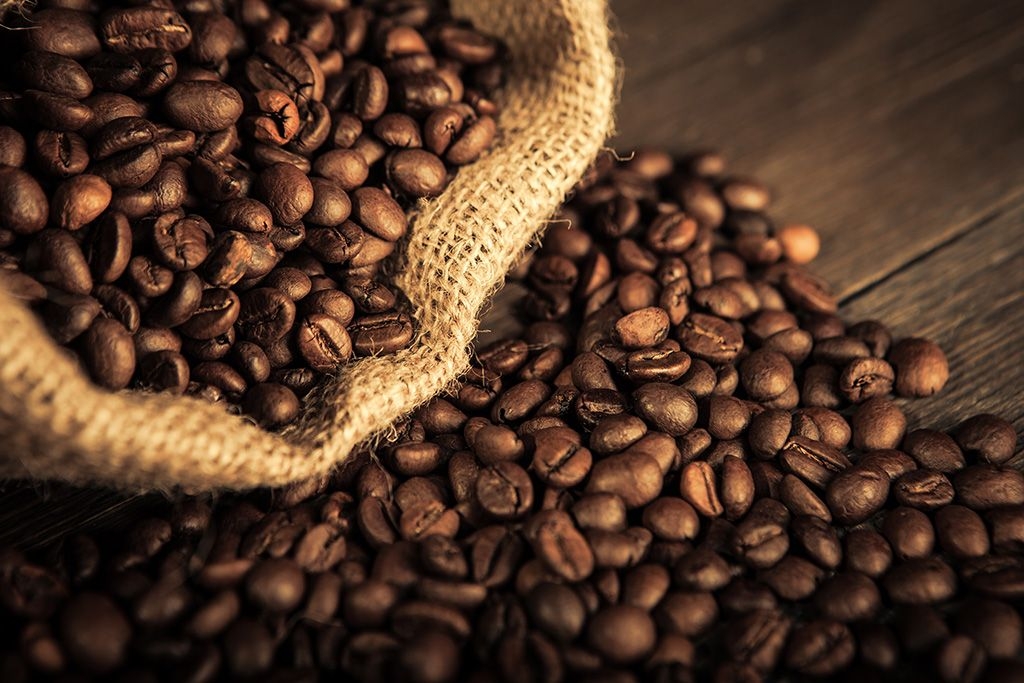
What is Latte? Learn About The Type Of Coffee That Is Loved Around The World

What Benefits Does Drinking Pure Coffee Provide To The Body?

The Golden Hour for Drinking Coffee to Stay Alert All Day

What is Latte? Learn About The Type Of Coffee That Is Loved Around The World

The 5 countries that produce the most coffee in 2023-2024 season

What is Latte? Learn About The Type Of Coffee That Is Loved Around The World
Does Arabica or Robusta Coffee Have More Caffeine?

Most people who enjoy a cup of coffee every day do not pay much attention to the main and most important ingredient of coffee, which is called caffeine. And if you have the right understanding about it, you can control the coffee flavor perfectly and most appropriately for yourself.
And now we let get started to study about Caffeine:
Which coffee has the most caffeine? How do you brew coffee with less caffeine? Does a dark roast really mean more caffeine than a light roast?
According to the FDA, coffee contains about 80-100mg of caffeine per 8oz cup. But that’s an estimate without nuance, and it turns out that a lot of questions on coffee’s caffeine content aren’t easy to answer.
Every step of the process, from coffee plants to roasting then to brewing, can affect the caffeine content of your brew.
Does Arabica or Robusta Coffee Have More Caffeine?
All the caffeine content in your cup of coffee starts with the bean. Each raw coffee bean already contains its maximum amount of caffeine (bound up in salts of chlorogenic acid) just waiting to be released into free form through the roasting process.
There are main species of coffee plant that produce the world’s coffee beans are Arabica and Robusta. While Arabica coffee, with its higher sugar content and pleasing aroma and exclusively accepted in the specialty coffee scene, Robusta coffee actually contains nearly twice the caffeine in each bean.
With a caffeine content per coffee bean ranging from 1.2% to 2.4%, Robusta coffees deliver about twice the dose of caffeine per prepared cup. However, the higher caffeine content also multiplies the bitterness of Robusta coffees, making the finished product less desirable for roasting and brewing.
Arabica (the good stuff) comes in at about a 0.9% to 1.5% caffeine content, if we are comparing two cups that were roasted, weighed, and brewed the same, technically making it the milder caffeine choice. In fact, coffee must be 100% Arabica to even be considered Specialty Grade
Since a higher caffeine content in the bean doesn’t mean better coffee, what other factors affect the final caffeine content in your brew? Before we get to the two main ways that you can control caffeine at home, let’s look at two elements you can consider before you buy: growth factors and roast level.
Does Growing Altitude Affect Caffeine Content in Coffee?
One of the other distinctions made in specialty coffee is the altitude at which the beans were grown. The higher the altitude, the harder the bean, and the higher the quality. But caffeine naturally occurs in smaller amounts in coffee the higher you go. Coffee grown at a higher altitude actually contains less caffeine per bean.
Fun fact: caffeine is a naturally occurring pesticide, which is one reason that high altitude coffee plants make less of it. After all, there are fewer pests the higher you go. Inversely, this also explains why Robusta plants grow much better at lower elevations than Arabica plants do. Thanks to their higher caffeine production, Robusta plants are better able to fend off the larger quantities of insects found in lower elevations.
Sunlight also affects caffeine content, with either two little or too much sun reducing the production of caffeine in each plant. Obviously, this is a difficult factor to measure, and we can’t really say with certainty in most cases whether a particular coffee lot experienced more or less sunlight in a given season. However, we think it’s important to point out sunlight’s effect because it illustrates the complex nature of caffeine content in coffee: no coffee has a set dose of caffeine despite what simple charts on the internet might suggest.
Coffee Roast Levels
Does Dark Coffee Have More Caffeine than Light Coffee?
Dark roast vs light roast is the coffee caffeine question most people get hung up on? Traditional wisdom says that a light roast has less caffeine, while the darker you go, the more caffeine you get (i.e., darker = stronger). While this can be true in some respects, the roast level isn’t the largest factor in your cup’s caffeine concentration.
In fact, if we’re talking about caffeine concentration in each bean, conventional wisdom has the facts backwards.
Earlier in this article, we said that each bean has all of its potential caffeine inside when it is harvested. This stays true through the roasting process: no matter the roast level, each individual bean still has much of the caffeine content it started with after processing. While there seems to be some caffeine loss as the roasting process passes caffeine’s sublimation point (about 352.4 degrees Fahrenheit) and at each crack in the roasting process, the amount doesn’t vary a great deal until the roast is so dark that it creates a final product that very few people enjoy (at that point, it’s pretty much on fire).
Why does conventional wisdom say darker is more caffeinated? Well, because the roast level does influence how porous each individual bean becomes in the process. Lightly roasted coffee beans are denser and heavier, with only a little mass roasted out of them, while dark roasted coffee beans become lighter, losing mass with temperature and roasting time.
At this point, caffeine content can change a lot depending on how you measure your coffee:
If you use a scoop or spoon to measure coffee, a light roast and a dark roast will result in similar amounts of caffeine in your finished cup of coffee (for beans from the same plant, processed the same way…you get the idea). With this method, the light roast will have slightly more caffeine, but not enough to matter much.
If you weigh your coffee on a scale, a dark roast will have significantly more caffeine than a light roast in your final cup (close to 30%). Why? Well, since the dark roast is lighter bean for bean, it takes more beans to make up the same weight as a measure of light roasted beans. More beans = more caffeine.
Now that you’ve gotten a good idea of what the roasting process does to your bean’s caffeine, it’s time to consider what your brew’s preparation steps might do to coffee’s caffeine potential.
Which Grind Has the Most Caffeine?
While grind size isn’t as significant a caffeine factor as volume vs weight, caffeine in your brew can be dependent on how long your grounds stay in contact with water through the extraction process. Finely ground coffee placed in a French press for four minutes will release more caffeine than the same weight in coarse grounds. Because the fine grounds have more surface area coming in contact with the water than coarse grounds do.
Heat matters, too. The hotter the water, the faster the extraction process, and the quicker the caffeine makes it out of the grounds.
A very basic take on this idea looks like this:
Hot water + long extraction time + finer grounds = more caffeine
Cooler water + short extraction time + coarser grounds = less caffeine
But very hot water + short extraction time + fine grounds can result in a similar caffeine content as a long extraction (this, along with serving sizes, explains why you might get an even higher caffeine hit at the coffee shop than you expect; commercial espresso machines extract with higher temps than many home brewing methods). And before you decide that a cold brew method has less caffeine because of the low water temperature, remember that it has a really long extraction in comparison to other methods.
Like we said, caffeine content gets a bit complicated.
The science behind caffeine is complex. While we can’t tell you exactly how much caffeine is in a single coffee bean, or how much caffeine is in a single scoop of coffee, we do hope you’ve found this guide helpful.
Other News


Coffee That’s Good for the Liver: The Secret to Drinking It the Right Way Every Day

How to Store Paper Drip Coffee Properly to Preserve Its Full Flavor

How to Brew Perfect Paper Drip Coffee at Home Simple and Authentic

Paper Drip Coffee: A Convenient Coffee Trend Among Young Consumers

How Is Salt Coffee Different from Milk Coffee? A Flavor Experience Comparison

Why Is Salt Coffee Easier to Drink Than Traditional Coffee?

What Does Salt Coffee Taste Like? A Surprisingly Pleasant Experience

How Do Altitude and Temperature Affect Coffee Quality?

6 Common Coffee Pests and Diseases and Effective Control Methods

6 Things About Climate Change Threatening the Global Coffee

The Golden Hour for Drinking Coffee to Stay Alert All Day

Why Robusta Coffee Is Becoming a Global Trend in the Era of Climate Change

6 Ways to Grind Coffee Beans Without a Grinde

Why does pure coffee taste sour? How to distinguish sour taste you should know

Homemade Orange Coffee: Simple Recipe, Café-Style Delicious

Drinking Coffee Causes Stomach Pain? Causes and Effective Solutions

Instant Coffee: 7 Unexpected Benefits and Facts You Need to Know

Black Coffee: A Smart Choice for Gen Z in the Age of Healthy Living

3 Steps to Make Salt Coffee at Home Café-Quality Taste in Minutes

How Are Instant Coffee and Drip Bag Coffee Different?

How Ground Coffee Differs from Coffee Beans: A Guide for Lovers of Pure Flavor

Coffee bean lovers are people who love meticulousness in every moment of life

Instant coffee trend in the modern lifestyle of young people

Coffee for Women The Convenient Choice for the Right Taste and Morning Energy

What is caffeine? Effect, dosage and what you should know.

Strong Coffee The Secret to Brewing the Perfect Bold Cup for Men

The difference between Arabica and Robusta coffee: the secret of choosing high-quality coffee

GOCE SALTED INSTANT COFFEE 4 IN 1 – THE SECRET TO STAYING ALERT ON EVERY TRIP

The difference between popular coffee beans at present: Arabica,Robusta,Culi,Moka Culi and moka.

How to Preserve Ground Coffee to Keep Its Original Flavor

WHAT ARE COFFEE GROUNDS? 5 SIMPLE TIPS TO USE COFFEE GROUNDS AT HOME

Pure Roasted Coffee – 5 Secrets to Identify Real Coffee vs. Adulterated Coffee

The Benefits of Black Coffee – A Healthy Beverage

Coffee Prices Today, September 23: Robusta Surpasses 4,280 USD/Ton, Market Heats Up

Rising Coffee Prices – How Does It Affect the Morning Cup of Coffee for Vietnamese People?

Drip Bag Coffee: The Future of Personalization in Every Small Pack

Goce Drip Bag Coffee – When Every Little Pouch Wraps Your Lifestyle

4 Key Factors Influencing Coffee Production Costs

WHY ARE YOUNG PEOPLE RETURNING TO TRADITIONAL VIETNAMESE PHIN COFFEE?

Discover Vietnam’s Coffee Harvest Season: The Golden Time for Bean Quality

How Many Types of Coffee Are There in Vietnam? Where Are They Grown Mostly?

What Benefits Does Drinking Pure Coffee Provide To The Body?

Drip Bag Coffee – The Perfect Choice for Busy People with Refined Taste

From Seed to Cup The Journey of a Delicious Coffee

The 5 countries that produce the most coffee in 2023-2024 season

How To Roast Your Own Coffee

How many people know 9 unique benefits of coffee?

What is Latte? Learn About The Type Of Coffee That Is Loved Around The World

What is Latte? Learn About The Type Of Coffee That Is Loved Around The World

What is Latte? Learn About The Type Of Coffee That Is Loved Around The World

What is Latte? Learn About The Type Of Coffee That Is Loved Around The World

What is Latte? Learn About The Type Of Coffee That Is Loved Around The World









